The Archaeological Museum of Istanbul provides a captivating look into the region’s ancient history. However, it offers minimal information about the city’s Christian history spanning 14 centuries. There are hidden crosses near the entrance, in the cafe garden, in the storage area, and the courtyard. The significant influence of the Byzantine history remains in the outdoor courtyard, exposed to the elements
The Hidden Crosses series documents visible Christian artifacts and evidence where there is little or no signage. Some museums and archaeological sites tend to ignore and conceal either purposefully or unintentionally Christian history.
On multiple visits over the years to the Istanbul Archaeological Museum, I realize the courtyard provides the Christian history. The area adjacent and on the right side of the entrance provides a small glimpse to Byzantine history. We will start in this location.
My walking tour map of this area.
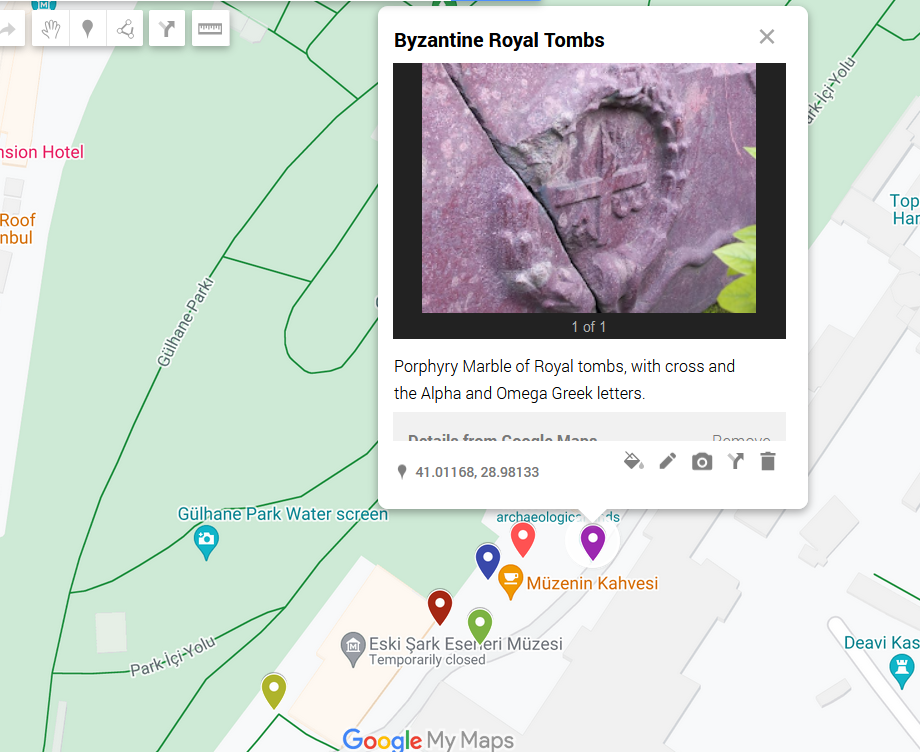
On the Right side of the Courtyard
One of the first objects displayed is a baptism from Yalova (South of Istanbul beyond Buyuk Ada Islands). This was in a former Byzantine church across the water on the south side of Istanbul. The shape gives the testimony of the death of Christ.
The Byzantines entered from the West to cast off their sins and exited the baptism toward the East. The church structure still remains in the village of Çiftlikköy.[1]https://gezente.com/ciftlikkoyde-sakli-bir-tarih-kara-kilise/ this site provides some good pictures of what remains. When observing the baptism, I ask my guest (s), what does this tell us about the Byzantines? First, they believed in immersion for baptism and the secondly, the cross shape stands out. Notice on the bottom left of the picture, a place for an additional cross. Based on the size of this baptism, the person squatted to go under the water, like in the Jesus Film.
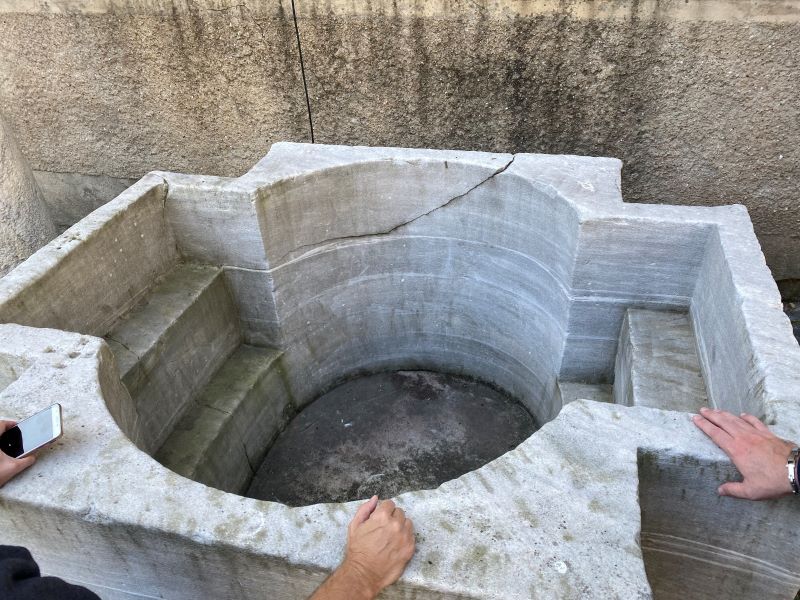
The next item displays delicate flowering patterns with a partial peacock. This archway below is from the Church of St. Polyeuctus (Polieuktos) which was the largest church in Istanbul before Hagia Sophia.[2]Excellent pictures of the site – https://kulturenvanteri.com/en/yer/ayios-polieuktos-kilisesi/#17.1/41.014123/28.953079 Located in Fatih area of Istanbul near the Byzantine Aqueduct, researchers are currently renovating the site, Saraçhane Archaeology Park. Some of the pillars, capitals, and archways come from that site. This church existed from the 6th to the 11th century. Also, the peacock and leafy grapes allude to Persian designs that the 4th and 5th-century artisans borrowed. The three-dimensional artwork still amazes the mind; initially, these leaves were colored.
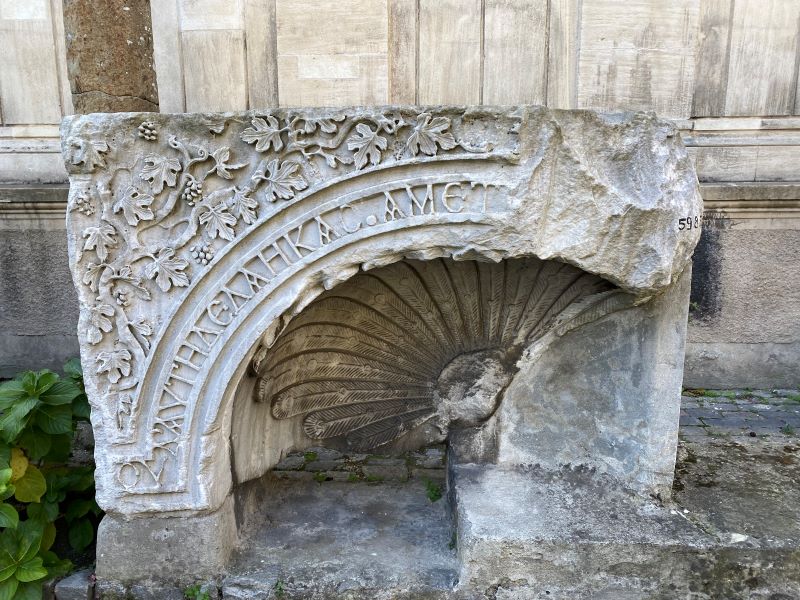
Christian Capitals at the Archaeological Museum
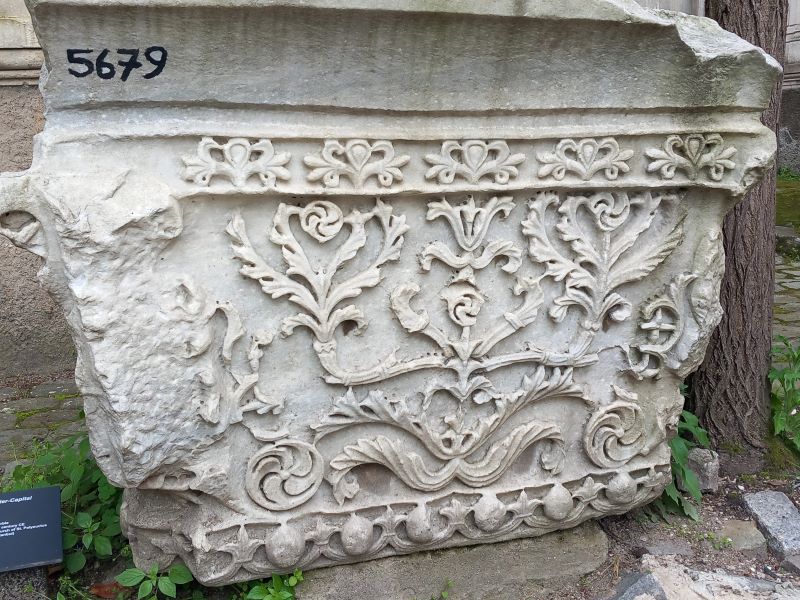
This Pier Capital from the Church of St. Polyeuctus, gives a glimpse of the importance of art to these early believers. The technical quality and unique motifs show the quality of artisan work in the 6th century. It is called a Pier Capital since it stood alone in its setting. Based on 2008 pictures online, it appears the capital has been cleaned, yet still sits exposed to the elements.[3]https://commons.wikimedia.org/wiki/File:Istanbul_Archaeology_Museum_Pier_capital_6th_C_CE_Church_of_St._Polyeuctus_2921.jpg
Proconnecian Marble came from Marmara Island, about 300 kilometers from Istanbul. This delicate work proceeded the Hagia Sophia artwork by about a decade. The artwork was so fine that raiders carried off elements of this church to Venice and Barcelona.[4]https://www.jstor.org/stable/1291345?read-now=1&seq=3#page_scan_tab_contents. This is an excellent write-up about this church by R. Martin Harrison.
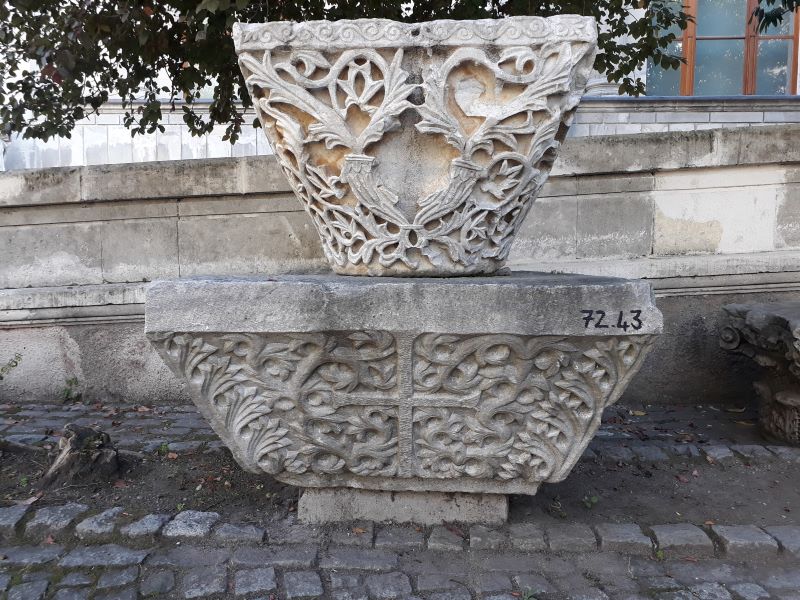
Row of Baptisms
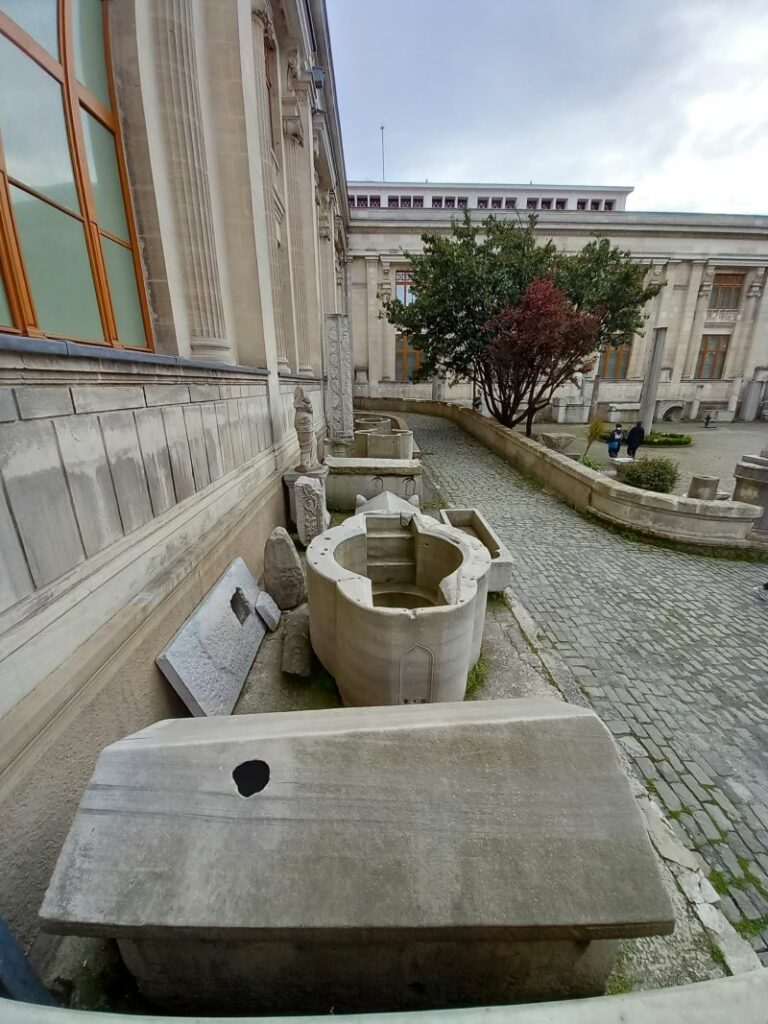
Before entering the main museum, there are numerous baptisms on the right side. The courtyard displays four baptisms from the 5th to the 6th century. The common element is the shape of the cross. The clover cross, similar to a fish, represents Christian commitment. On this row of items, the central pillar came from near the Small Hagia Sophia, which is located south of the Hippodrome, near the water. This pillar is an example of early 2nd or 3rd-century artwork. Other hidden cross capitals and entry stones intermix in this section on the ground.
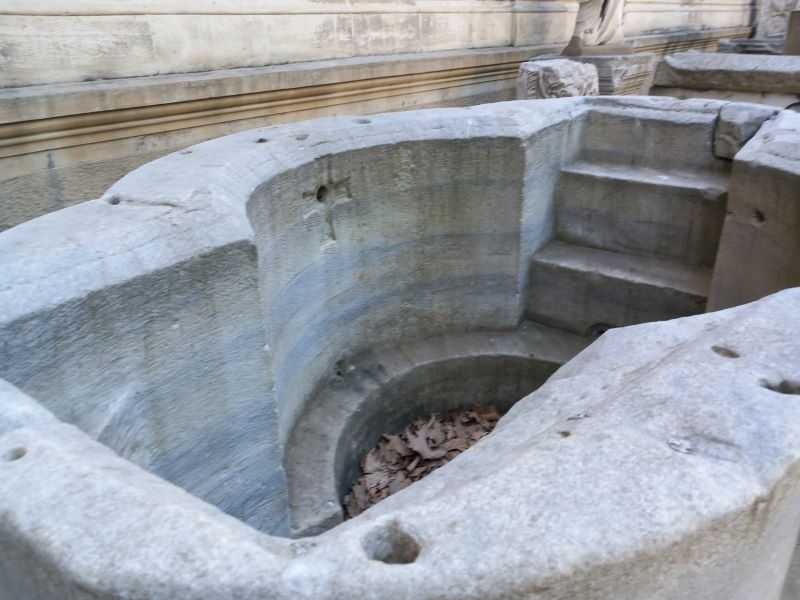
Byzantine Emperor Tombs
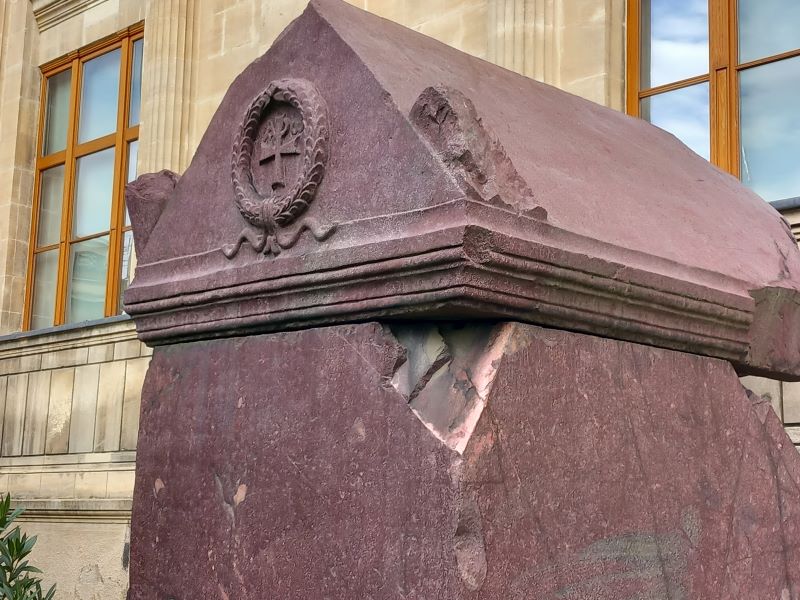
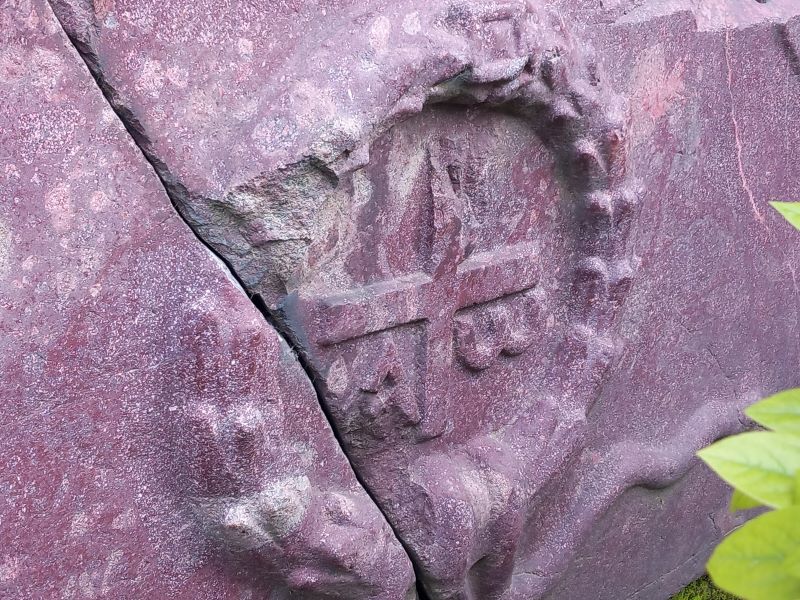
Just the left of the entrance to the Archaeological Museum lay four purple tombs. The Imperial Porphyry Tombs hosted the bodies of Byzantine Emperors previously. These tombs declare simple symbols of the cross and Christ being the Alpha and the Omega.[5]https://www.pallasweb.com/deesis/imperial-porphyry-tombs.html – An excellent write up on these tombs. These tombs were found from the monastery area of St. Irene where domed tombs housed them. (Some similar tombs are still in the inner courtyard of that former church.)
All the emperors of the Byzantine time (94 in total) period were cast out of their tombs except for one. For when the Ottoman’s conquered Istanbul they took over the majority of the major church sites. Bob Atchison said, “Along with all of the Christian furnishings that were used in worship services and their decoration, the Ottomans cleared out all of the tombs and burials they could find.” For this reason, in the courtyard here and also Hagia Sophia, we see empty tombs desecrated.[6]see https://www.pallasweb.com/deesis/imperial-porphyry-tombs.html Bob Atchison’s site gives the following list.
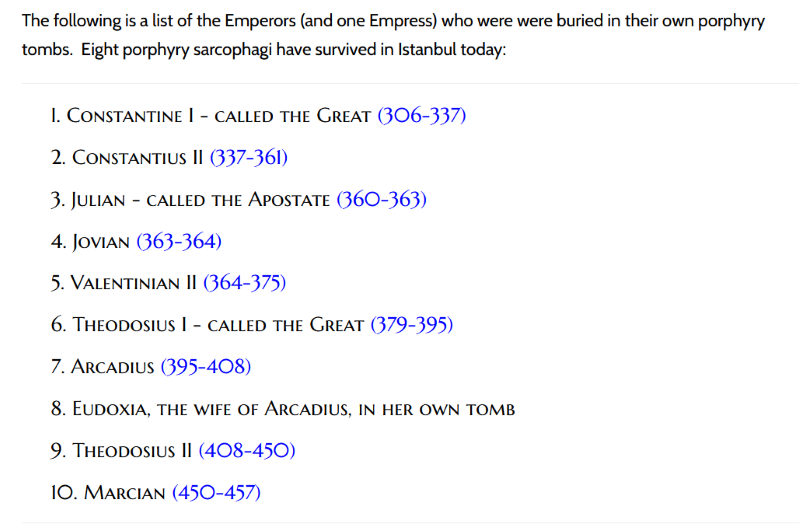
At the far end of the Archaeological Museum’s courtyard, you’ll find a marble grave that holds a significant place in history. Past multiple secular graves and up a ramp, you’ll discover the 6th-century Byzantine prince’s grave. This grave, remaining cover less and broken, was once part of the same mausoleum as Justinian. It bears witness to the consistent desecration that history has unfolded.
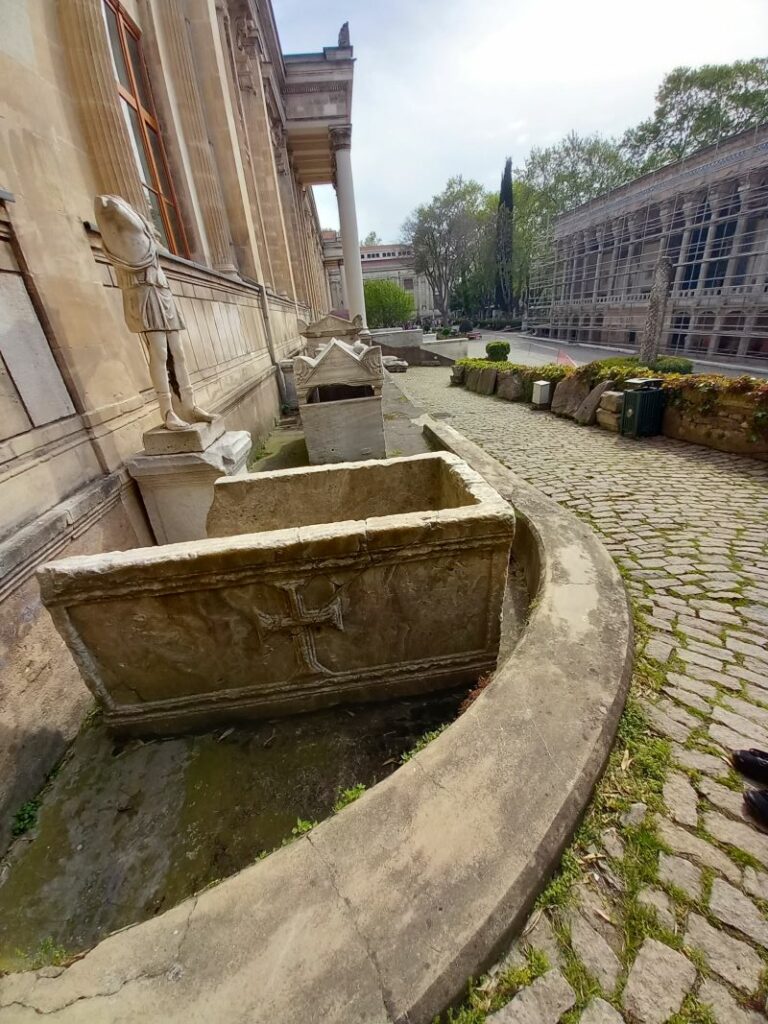
Now we have visited the courtyard, our next stop will be the hidden crosses near the offices and storage.
Check out my other walking tours, writings on God’s Oneness, or insights to the Hagia Sophia.
References
| ↑1 | https://gezente.com/ciftlikkoyde-sakli-bir-tarih-kara-kilise/ this site provides some good pictures of what remains. |
|---|---|
| ↑2 | Excellent pictures of the site – https://kulturenvanteri.com/en/yer/ayios-polieuktos-kilisesi/#17.1/41.014123/28.953079 |
| ↑3 | https://commons.wikimedia.org/wiki/File:Istanbul_Archaeology_Museum_Pier_capital_6th_C_CE_Church_of_St._Polyeuctus_2921.jpg |
| ↑4 | https://www.jstor.org/stable/1291345?read-now=1&seq=3#page_scan_tab_contents. This is an excellent write-up about this church by R. Martin Harrison. |
| ↑5 | https://www.pallasweb.com/deesis/imperial-porphyry-tombs.html – An excellent write up on these tombs. |
| ↑6 | see https://www.pallasweb.com/deesis/imperial-porphyry-tombs.html |
[…] area of the Madrasa across the street appears a marble basin that looks very similar to the Byzantine baptism chambers found in the Istanbul Archeology Museum.[9]Antalya’daki Selçuklu Dönemi yapılarında bahçe […]